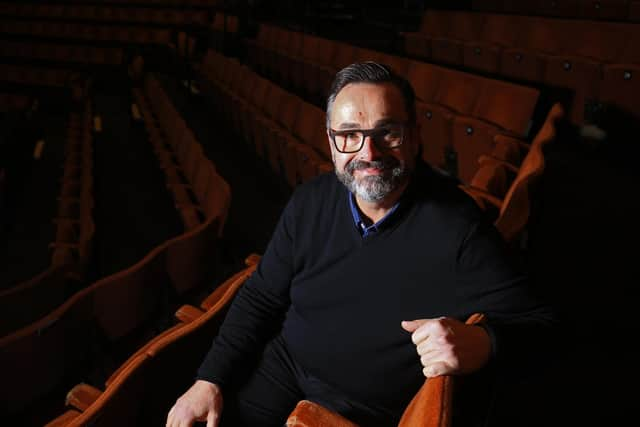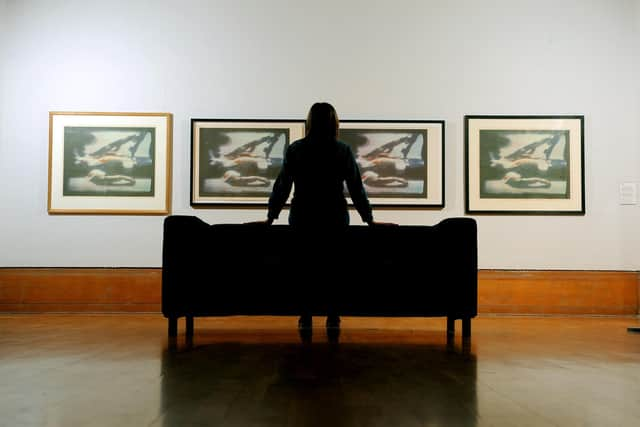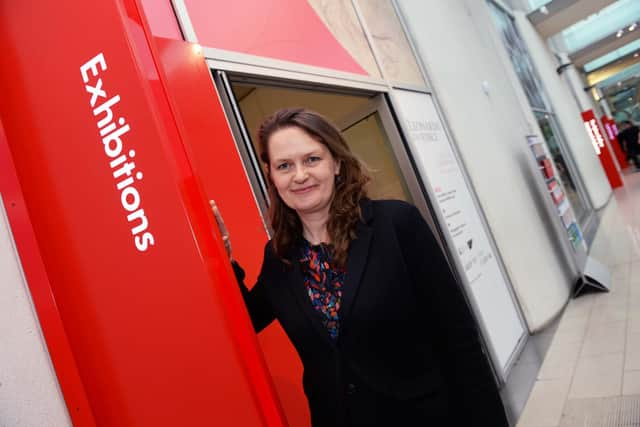People in Sheffield get less than £10 per head in arts funding – but other Northern cities receive up to five times as much
and live on Freeview channel 276
In 2018/19, the most recent year for which accounting statistics are available, Arts Council England spent £6.40 per head of population on organisations and projects as well as distributing £3.10 per person in National Lottery funding in Sheffield.
But in the same 12-month period, just under £49 per head was invested in Manchester's cultural scene – £34.21 was spent on behalf of each resident in Leeds, and £22.53 in Liverpool.
Advertisement
Hide AdAdvertisement
Hide AdPrevious years show a similar disparity, according to the figures which relate to local authority areas.


Since 2012, Manchester, Leeds and Liverpool have consistently received more than £10 per resident from Arts Council England in grant-in-aid money, and restricted funds which can only be used for a specific purpose such as restoring a building - the most Sheffield has been allocated in that time frame is £7.57 per head, in 2012/13.
Pete Massey, ACE's director for the north, said the funding body would 'love the opportunity to invest more money' in Sheffield - but that it needed 'strong partners in local government' to do so.
Dan Bates, chief executive of Sheffield Theatres which operates the Crucible and Lyceum venues, said that the 'distinct difference' in arts funding for Sheffield was 'well known' within the city's cultural community.
Advertisement
Hide AdAdvertisement
Hide Ad"At Sheffield Theatres, nine per cent of our public funding comes from the Arts Council each year," he said.


"This is vital in supporting us to make bold and brilliant theatre in the city. Critically acclaimed and popular shows like Life of Pi or Standing at the Sky’s Edge are testament to how we are using our funding in this way, as well as Sheffield Theatres' incredible work in schools and in our communities.
"The difference in funding compared to other northern cities means that we have to ask our audience for more support, more often, to help us make this continued difference, and we use this money to ensure that we are as accessible as possible to everyone.
"There’s a lot more we could do with more investment from the government, and we are working together across the city to help grow this investment. I am proud of what Sheffield Theatres contributes to the city and we remain passionate and committed to continuing our ambitious work that places the city at the heart of the country's cultural offer and makes a real difference to our communities."
Advertisement
Hide AdAdvertisement
Hide AdKim Streets, chief executive of Museums Sheffield which runs the Graves and Millennium Galleries, and Weston Park Museum, said the city was successful despite receiving 'comparatively less funding per head'.


"We really deliver," she said. "We can point to award-winning theatre, extraordinary museums, ground-breaking exhibitions and amazing experiences created with, by and for people from all walks of life throughout the city. There is a palpable appetite for culture in all its forms and it’s important that we recognise that and harness it. Greater investment would bring huge opportunities for culture to play a bigger role in the city and the city region – our creative and cultural assets are a vital part of the economy, but more than that they play an essential role in shaping how we are seen around the world and how we feel about where we live."
Ms Streets added: "The city has a lot to be proud of but there’s no room for complacency, we could and should do more and better. We’ve got the ambition, the talent and the potential - but to realise the investment we need to make it happen, Sheffield must be able to articulate its vision and long-term strategy for culture and have a plan in place to deliver it."
Sheffield, she said, has fewer National Portfolio Organisations - places that comprise Arts Council England's core funding roster - than other major Northern cities. "We have 11, Nottingham has 14 and Leeds 25. The reasons why are complex."
Advertisement
Hide AdAdvertisement
Hide AdMuseums Sheffield is an NPO, which means it receives £600,000 annually until 2022.


Particular art forms receive extra money too, Ms Streets continued. "Ballet and opera receive significantly more funding across the board than theatre and museums for instance. Leeds has both Northern Ballet and Opera North and this is reflected in the overall investment per head."
Both Ms Streets and Mr Bates are involved in the Sheffield Culture Collective, a partnership between the city's public, private and voluntary sector that was launched last September. Ms Streets said the collective will be focusing on ensuring Sheffield has a 'comprehensive and compelling vision for culture' in the months to come.
"Central to the collective, the local authority has an important role to play in how that vision and plan develops – many of the city’s cultural assets exist because of the council’s long-term commitment to culture; their leadership and commitment to developing and investing in culture for the future is absolutely vital," she said. "If we can secure this commitment, alongside that of city and city region partners, then I’m confident that we can begin to lever the level of investment that the city needs."
Advertisement
Hide AdAdvertisement
Hide AdOther upcoming changes will help too, Ms Streets said - the Sheffield City Region Mayor Dan Jarvis intends to appoint an ambassador for culture, while the city council is hiring a new director of culture.
Mr Massey said: “Sheffield is a city with huge cultural assets and potential and we’d love the opportunity to invest more money to expand these. But to do that we need strong partners in local government, and often that investment comes through funding aimed at regeneration, economic development and tourism.
“Major cities across the North have recognised the value culture can bring to their economy and growth – Liverpool was European Capital of Culture in 2008, Manchester has had culture at the heart of its regeneration and Leeds is building towards a special year of culture in 2023. It’s very clear the way these cities recognise how culture contributes to them being great places to live and work. We hope we will have the opportunity to work with partners in Sheffield to invest more funding in the future."
Sheffield City Council was approached for comment.
IN NUMBERS - HOW SHEFFIELD'S FUNDING PER HEAD OF POPULATION FROM ARTS COUNCIL ENGLAND COMPARES WITH OTHER NORTHERN CITIES
Advertisement
Hide AdAdvertisement
Hide AdInvestment consists of grant-in-aid, restricted funds and National Lottery money. Figures relate to local authority areas.
Sheffield
2018/19 - £9.50
2017/18 - £9.53
2016/17 - £12.62
2015/16 - £11.17
2014/15 - £9.68
2013/14 - £7.95
2012/13 - £10.72
Manchester
2018/19 - £48.62
2017/18 - £28.34
2016/17 - £196.74
2015/16 - £47.45
2014/15 - £30.62
2013/14 - £42.40
2012/13 - £47.69
Leeds
2018/19 - £34.21
2017/18 - £39.61
2016/17 - £33.13
2015/16 - £32.32
2014/15 - £31.38
2013/14 - £30.66
2012/13 - £36.02
Liverpool
2018/19 - £22.53
2017/18 - £22.17
2016/17 - £29.41
2015/16 - £27.06
2014/15 - £24.53
2013/14 - £42.01
2012/13 - £23.57